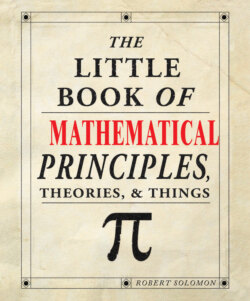Читать книгу The Little Book of Mathematical Principles, Theories & Things - Robert Solomon - Страница 21
5th century BC Greece Squaring the circle
ОглавлениеThis is another of the three Greek problems (the others being Trisecting the Angle and Doubling the Cube): Given a circle, construct a square of equal area.
_______________
The problem of squaring the circle reduces to the following: given a line of length 1, construct a line of length π. As always in Greek geometry, the only instruments you are allowed are a straight edge and compasses.
The phrase “squaring the circle” has entered ordinary language to mean a task that is inherently impossible. The original meaning was subtler and less clear cut, however. It means to find a method of constructing a square exactly equal in area to a given circle. It is far from obvious that this is impossible.
Suppose, for simplicity, that the circle has a radius of 1 unit. Then its area is π x 12, which is π. If the equivalent square has side x units, then its area is x2.
The problem now becomes to find a length x such that x2 = π. The side x of the square must be equal to √π, the square root of π.
The square root is not a problem. If you can construct a length k, then you can construct a length √k. The problem is π. Ingenious methods were invented to draw a line of length π, but they all used moving parts, or required curves that could not be drawn exactly, such as spirals.
The three Greek problems have all been resolved, but only over 2,000 years since they were originally posed.
Area π
Area x2
The above illustration shows a circle and square of equal area.
See: Squaring the Circle Revisited, page 133
